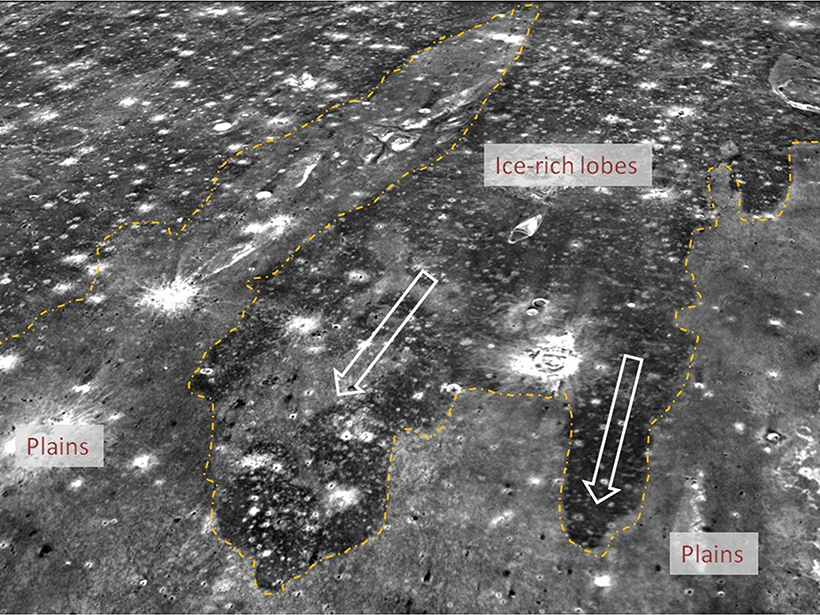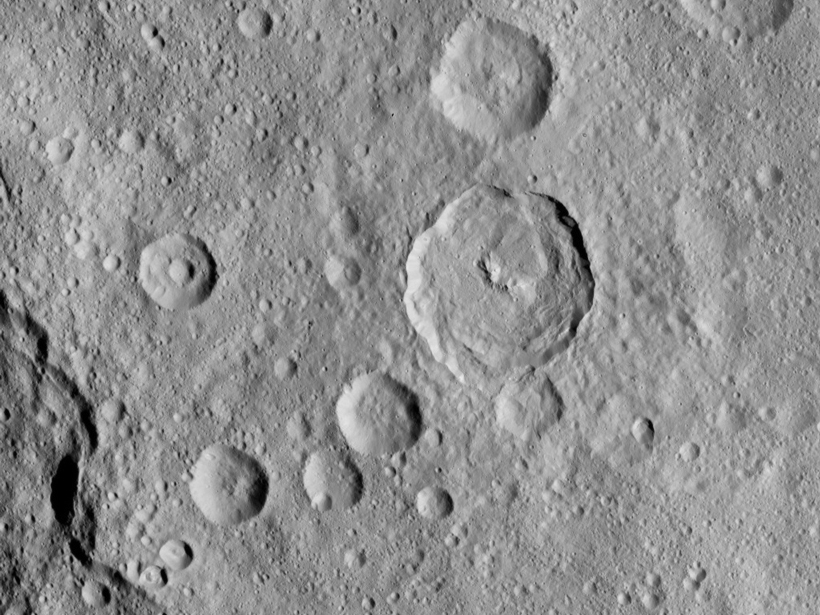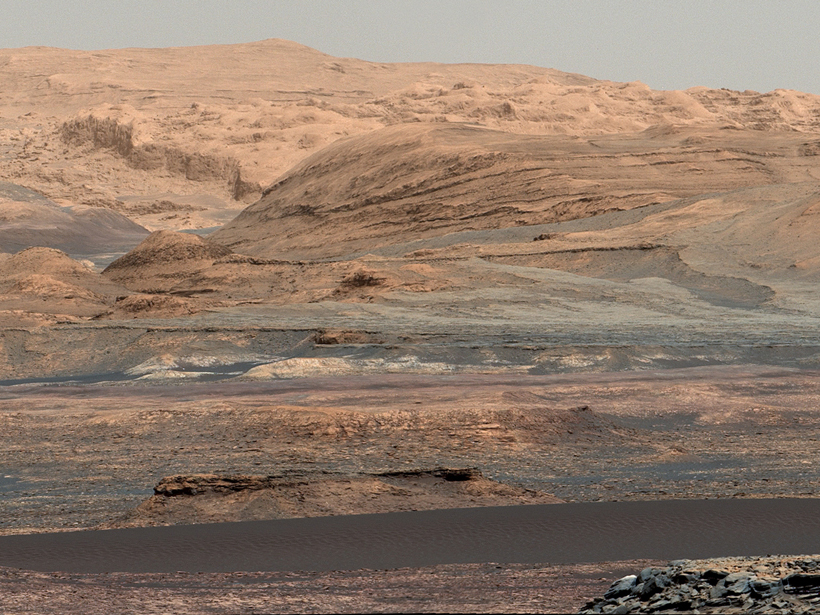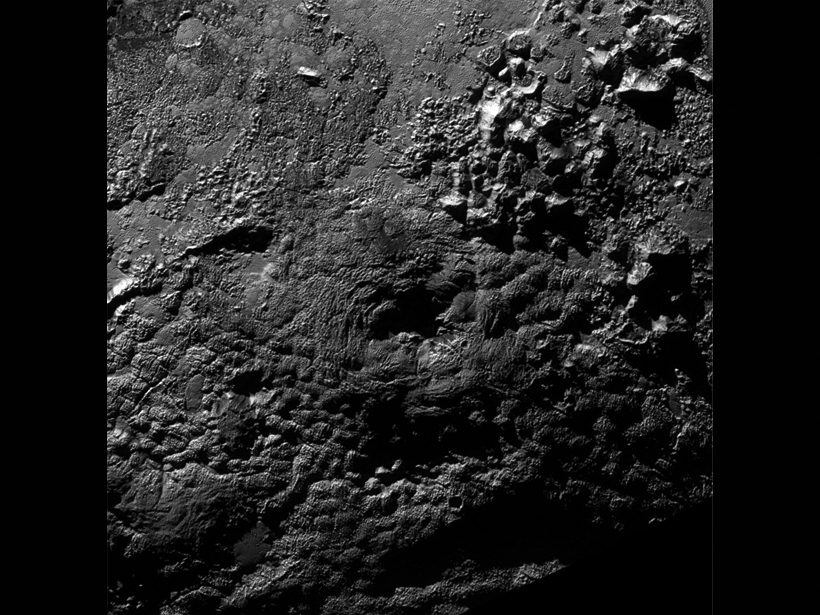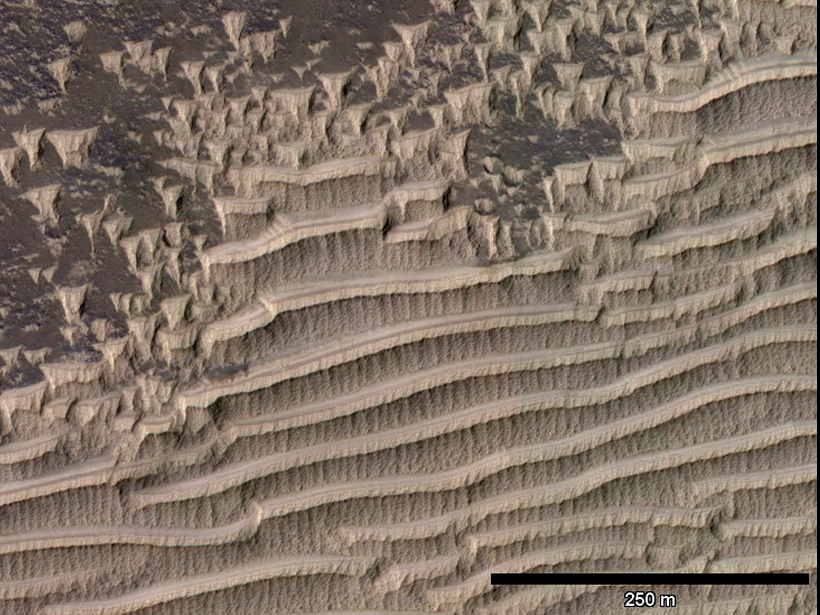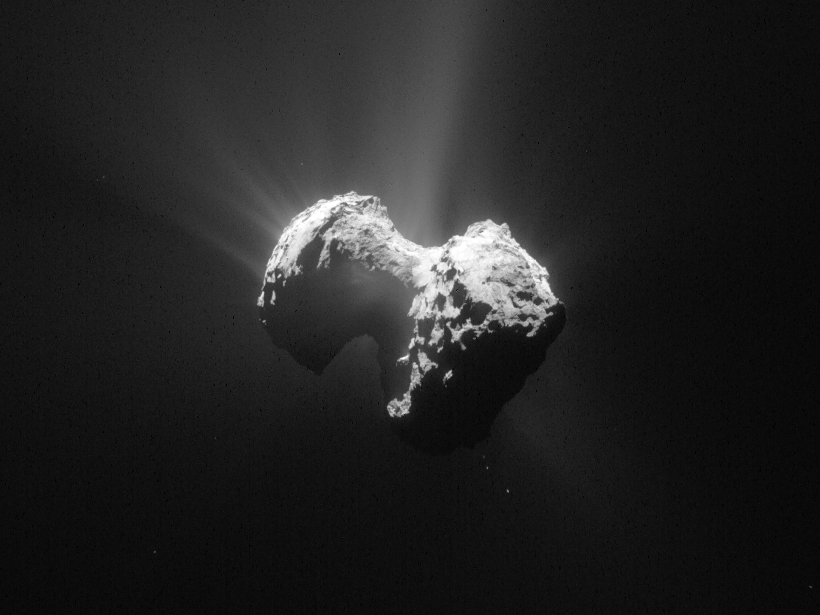The rover's neutron spectroscopy instrument hints at an unexpected trend: The upper soil levels in the layers of Gale Crater's Kimberley formation seem to hold more water-associated hydrogen.
planetary surfaces
Tsunamis Splashed Ancient Mars
Massive meteorites likely slammed into a Martian ocean billions of years ago, unleashing tsunami waves up to 120 meters tall, a close study of a region of the Red Planet's terrain has found.
Demystifying Mercury "Hollows"
Spectral data from NASA's MESSENGER spacecraft indicate that the properties of the depressions on Mercury's surface can vary within a single crater and that these differences may correlate to age.
Objects That Slam into Ceres Remain on Its Surface
Hypervelocity impact experiments shed new light on the composition and evolution of the largest dwarf planet's little-known surface.
Where Curiosity Has Taken Us
The Curiosity rover, one of NASA's flagship missions, analyzes Martian geology, geochemistry, climatology, and radiation to assess whether Mars could have supported microbial life.
Pluto: In the Icebox but Maybe Still Cookin'
New evidence of ice volcanoes and of middle-aged terrains on Pluto's surface suggests that the dwarf planet has remained geologically active ever since it first formed billions of years ago.
Curiosity Rover Finds Organic Molecules on Martian Surface
Scientists assess the present and past habitability of Mars from organic compounds detected at Gale Crater.
What Formed These Curious Ripples on Mars?
Dunes, ridges, or something else? Scientists seek to understand the origins of transverse aeolian ridges.
The Importance of Dunes on a Variety of Planetary Surfaces
The Fourth International Planetary Dunes Workshop: Integrating Models, Remote Sensing, and Field Data; Boise, Idaho, 19–22 May 2015
Comet Lander Makes a Hard Discovery
The Philae probe, dropped onto a comet by the Rosetta spacecraft, has made contact with a surface thought too hard to be on a comet and has detected a few organic molecules new to comet exploration.


